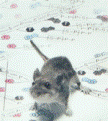Papers in the Biological Sciences

Jay F. Storz Publications
Document Type
Article
Date of this Version
June 2007
Abstract
Gene duplication is thought to play an important role in the co-option of existing protein functions to new physiological pathways. The globin superfamily of genes provides an excellent example of the kind of physiological versatility that can be attained through the functional and regulatory divergence of duplicated genes that encode different subunit polypeptides of the tetrameric hemoglobin protein. In contrast to prevailing views about the evolutionary history of the α-globin gene family, here we present phylogenetic evidence that the αA- and αD-globin genes are not the product of a single, tandem duplication of an ancestral globin gene with adult function in the common ancestor of extant birds, reptiles, and mammals. Instead, our analysis reveals that the αD-globin gene of amniote vertebrates arose via duplication of an embryonic α-like globin gene that predated the radiation of tetrapods. The important evolutionary implication is that the distinct biochemical properties of αD-hemoglobin (HbD) are not exclusively derived characters that can be attributed to a postduplication process of neofunctionalization. Rather, many of the distinct biochemical properties of HbD are retained ancestral characters that reflect the fact that the αD-globin gene arose via duplication of a gene that had a larval/embryonic function. These insights into the evolutionary origin of HbD illustrate how adaptive modifications of physiological pathways may result from the retention and opportunistic co-option of ancestral protein functions.


Comments
Published in Molecular Biology and Evolution 24:9 (2007), pp. 1982-1990; doi 10.1093/molbev/msm127 Copyright © 2007 Federico G. Hoffmann and Jay F. Storz. Published by Oxford University Press on behalf of the Society for Molecular Biology and Evolution. Used by permission. http://mbe.oxfordjournals.org/